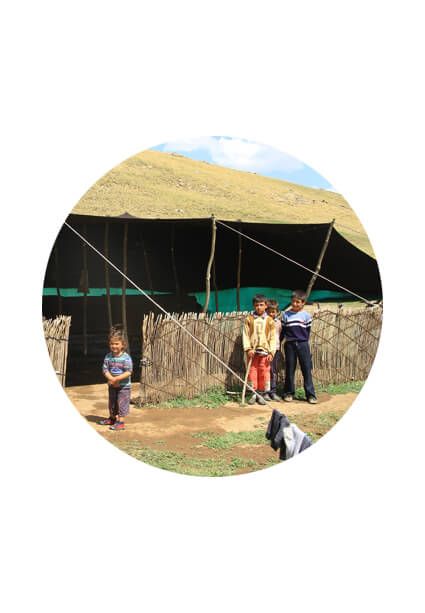Some details in cuneiform texts allow us to make inferences about Urartu state management. As in the other states of the period, there is a monarchical management. The kingdom is transmitted from father to son. There is an ongoing management understanding within the same dynasty/family. In the framework of the traditional king definition of the Near East, the king is mentioned with magnificent titles: Strong King, Great King, King of Biainili Country, King of Kings, Hero of the Tuspa City.
Argişti’s son Sarduri, strong king, great king, king of the earthı, king of Biaina Country, king of the kings, master of Tuşpa City.”
The head god Haldi is used as the main emphasis in many of the kingdom's activities. In this respect, there is also a theocratic management. The head god Haldi recognizes legitimacy to the king.
With the power of God Haldi, Argushi's son Sarduri says; in kamani month, I gathered my soldiers. I begged to the Head God Haldi, the God of Storm, the God of Sun (and) the (all) Gods off Biainili Country to give me greatness against the Enemy Countries (?), the gods heard my prayer…
…Thanks to the greatness of God Haldi, Argisti's son Sarduri says; When God Haldi gave me the kingdom, when I sat on my father's kingdom (throne)…
The king, who takes his power from Haldi, is the absolute ruler and is rightholder in all of Urartu Country in the name of God Haldi. The king, who built castle, made water channel, made military expedition, always get to work by the name and permission of head god Haldi. In various regions of the country, he establishes king cities which are the symbol of his prestige, propaganda.
The period of the king Işpiuni and his son Minua is the shared management. Triple management is in question in some of the inscriptions related to the same period.
“Thanks to the power of God Haldi, İşpiuni, the son of Sarduri says; Minua, the son of İşpuini, İnuşpua, the son of Minua built the susi temple of God Haldi. In the town of Tuşpa they made the God Haldi doors perfectly.. ......bull, sheep. The Gate of God Haldi grants greatness and life to İşpuini, the son ofSarduri, Minua, the son of İşpuini, İnuşpa, the son of Minua.
The conditions and preferences that constitute the shared management period of Ispini-Minua and Inushpua are not clear. Contrary to expectations, after Minua, Argişti came to the kingdom throne, not İnuşpua.
For outside the central extension areas, the Urartians carried out management and audit functions over the state system. The Urartian and Assyrian sources provide information on the Urartian provinces and their governors, even a little. For example II. Sarduri period, the boundaries of the administrative district were drawn by giving the name of the governor in the Bahçecik inscription.
…Sarduri says: I have appointed Zaiani as governor in the country up to Melitea (Malatya) City, up to Qumaha (Adıyaman) City, up to Nihiria City in the Arme Country and up to Haşime Country …
The states are regional management centers of Urartu with economic and strategic importance in the regions removed from royal centers. At this point, it can be thought that Urartu provinces were established in areas such as Erzurum, Erzincan, Elazığ-Malatya and Urmiye Basin. It can be argued that he Urartian settlements such as Erzincan-Altıntepe, Elazığ-Palu, Muş-Kayalıdere which have parallels with the royal centers in these regions in many ways, are the state centers. They could have temple, palace, warehouse structures like royal centers.
In Urartu, narrower and local administrative units can be defined as tribal centers. Their governors point to the settlements and communities, often referred to as Urartian inscriptions, in a rural area, sometimes in a more closed local small area, in high mountain areas. When considering the geography and the recent political history of the region, the community and managers who can change sides sometimes can be mentioned within the framework of socio-economic, political and security policies.
The cuneiform clay tablet found in Toprakkale gives information about some professions and officials in Urartu. Among the staff of the palace consisting of 5.507 people, the identifiable/readable groups can be listed as follows:
66 weavers, 3784 eunuch attendants, 108 palace guards, 119 accountants, 10 inspectors, 168 palace servicemen, 71 muleskinners, 20 carpenters, 1188 dog holders.
It can be said that agriculture and animal husbandry constitutes the basic dynamics of the Urartian economy. The same applies to the Urartian community as well as to the other local communities that spread to the Urartian geography as much as the family that constitutes the state.
The main expansion areas of the Urartian Kingdom, in other words, the areas where the royal centers are established, are areas where the agricultural potential is also high. Van Lake Basin and Iğdır-Aras Basin are the prominent regions. Royal centers are also economic basis where agricultural production is organized at the point of storage and labor. Storage units and building found out in almost all royal centers excavated constitude the evidence of their these functions. Kings specifically state in inscriptions that they build grain warehouses. These grain warehouses that each can buy tons of products, in which the large cubes are buried in the ground up to their shoulders in rows, constitude the royal city’s main buildings ramparted. It is understood from the products in the cubes in these warehouses that they mosthly engaged in wheat and barley agriculture.
In many inscriptions, the Urartian kings mention that the soil is barren before they cultivated, the fields to be planted, the vineyards, the gardens and they have opened channels to irrigate them. While the royal cities are established, it is understood that agricultural lands under the control of these areas were planned together and agricultural infrastructure services were also established. The king does all this in the name of God and demands that the beneficiaries lose as casualties particularly to the head god Haldi.
There is some evidence that private property exists. For example Argişti, the son of I. Rusa states “…he shoot arrows from this place, in other words in front of the Gilurani forest to the garden of İşpilini, the son of Batu….
Another residual of material culture that points to organized agricultural activities in Urartu is dams and irrigation canals. The most prominent of these is the Minua Canal, which brings water to the Van Plains from the Hoşap River and provides agricultural water to the route it brings. Keşişgöl Barrage dated Rusa period, the son of Argişti points to another irrigation system.
Urartu geography and climate necessitate to do animal husbandry as a basic element of the economy. This high plateau is not suitable for growing many products. The long and harsh winter season limited the production economy at many points. Large grasslands and water reserves and climate in high plateaus provide great advantages in sheep and goat breeding. The animal bones found out in the Urartian centers indicate that the animals were the main nutritional source in the royal cities. The transhumance has been a life model which is necessitated by the economy based on livestock for the region. When summer comes, it is accepted that most of the rural population of Urartu engaged in animal husbandry climb to the highlands in high-ranking and they stay in these areas for 3-4 months.
The military expeditions of Urartu are one of the activities that provide a serious economic return for the state. It is understood that these expeditions, which are often made by almost every king, are against the rebel community, country or regional kingdoms. Another reason for Urartu's military expedition for systematic economic interest pusposes is that the tribal and other regional governments, who are “taxpayers”, have not fulfilled these commitments. The taxation period constitutes the important economic input of the kingdoms. In this context, the nature of the spoils obtained as a result of the expeditions also gives information about the potential of the job. The Urartian kings range the spoils they have obtained from the countries they have seized. Some of these exaggerated inventories help us understand the extent of the spoils policy. It is understood that human, animal and various mines constitute the basic spoils of these expeditions. It is understood that this tradition continues throughout Urartu history. For example, yearbooks, that Argişti is written with cuneiform on the front of his tomb in Van Castle, give information about the amount of spoils in these expeditions. The King obtained 150.000 cattle, 680.000 sheep, 13.000 horses and 450 camels as spoils in his expeditions to various regions of the country as these numbers are only the general numbers obtained from the yearbooks in the tomb of Argişti. The number of people captured is around 250.000, including young, male and female. Throughout its history, it is observed that Urartu has followed a serious deportation policy in the regions where it organized its expeditions. This is sometimes economic, that is, it is used to take advantage of the workforce of people and sometimes develops within the framework of a systematic assimilation program. The mass population transfers carried out as a result of these expeditions have been one of the most important factors determining the settlement policy and socio-economic structure in the Urartian geography.
It can be said that the general purpose of the Urartian deportation application is as follows:
- To establish new residential areas and place people in these areas
- To pacify by changing the problematic communities in conquered areas or centers
- To meet soldier need
- Provide human resources to be used in private Works requiring specialization.
It is often expressed that mining is an important economic input for Urartians. The region has rich copper and iron ore deposits. However, no direct archaeological findings have been found that they were processed in the Urartu period. The source of iron and bronze artifacts found out in Urartu centers is sometimes object at issue. Agricultural tools, jewelry, articles and various appliances from the graves indicate a considerable amount of mine production and trade. Some Assyrian inscriptions mention that iron was taken from Urartu as spoils. All this indicates that iron can be an important economic value in Urartu geography.
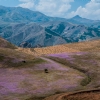
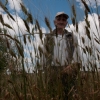
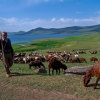
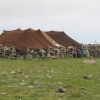
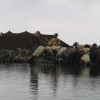
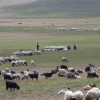
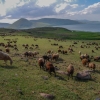
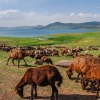
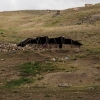
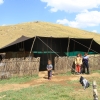
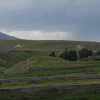
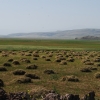
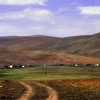
VAN DAĞLARI
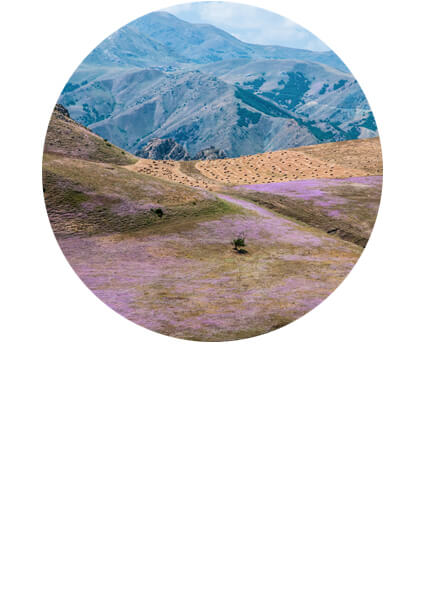
YAYLACILIK
